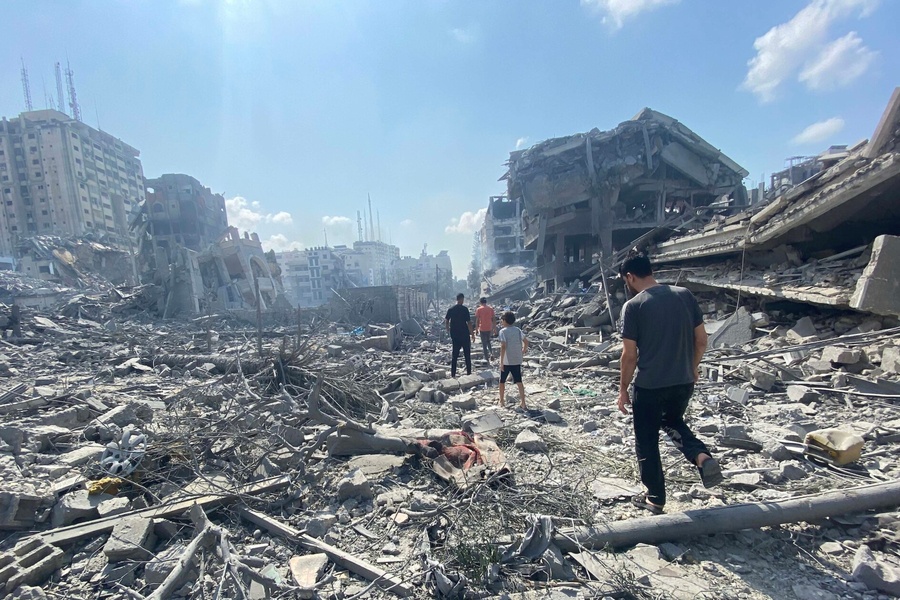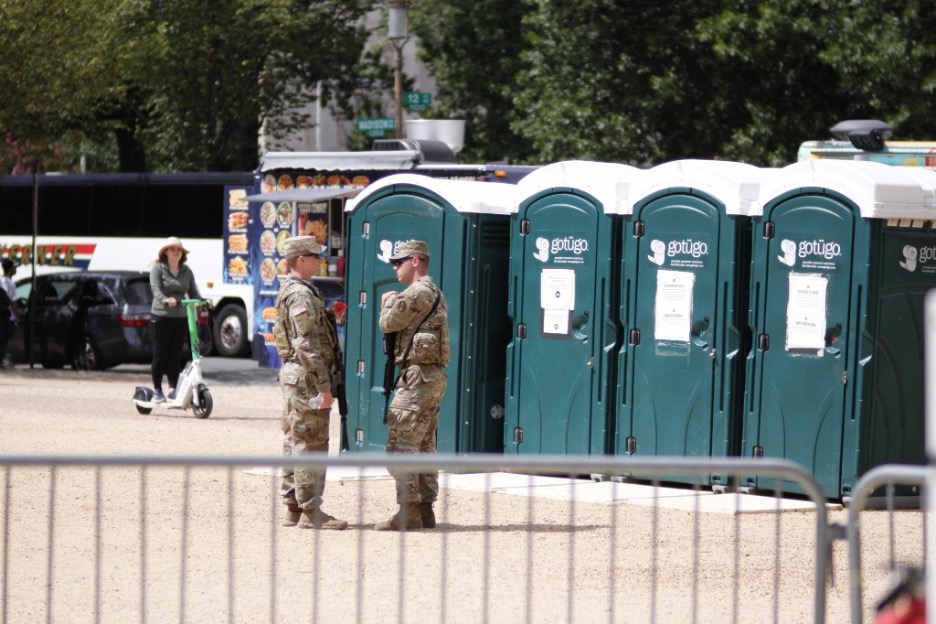Published by The Lawfare Institute
in Cooperation With

Recently, the Los Angeles Times reported that the U.S. Air Force had awarded civilian service contracts to include the operation of MQ-9 Reaper drones. The article concluded with a quote from longtime targeted killing critic Mary Ellen O’Connell: “Military drones should be flown only by those who ‘wear a uniform [and] are trained in the law of armed conflict[.]’" The Times left the distinct misimpression that civilian involvement in the so-called “kill chain”—the process by which combat air patrols find, fix, track, target, engage, and assess targets—is a per se violation of the Law of Armed Conflict (LOAC). This errant theme was shortly picked up by other popular publications.
LOAC, however, does not prohibit civilians from directly participating in hostilities. That said, although civilian participation is permissible, there are ramifications. As noted in a 2010 Human Rights Council report, “the consequence of participation is two-fold.” First, such civilians may be lawfully targeted for such time as they take a direct part in hostilities. Second, they do not qualify for the combatant’s privilege, meaning they could face prosecution under domestic law for acts which combatants are entitled to commit.
Both the DoD Law of War Manual and Office of Legal Counsel guidance recognize the lawfulness of civilian participation in hostilities. The OLC has determined (with respect to CIA operatives) that otherwise lawful operations “do not violate the laws of war by virtue of the fact that they are carried out in part by government actors who are not entitled to the combatant's privilege.” Over a half-century ago, Judge Richard Baxter noted that the view that unprivileged belligerency is a war crime rests on “fundamental confusion” between punishable and unprotected acts. More recently, this same confusion was temporarily resurrected in the context of the Military Commissions, as well.
It is unsurprising that the same arguments used to disparage the CIA drone program — here, the civilian status of pilots — would now be levied against the Air Force. Criticisms of the CIA use of force were not intended to endorse the military’s use of force. Rather, the Department of Defense — with kinetic activities generally limited to areas of acknowledged hostilities and comparatively robust requirements for transparency — served as a useful foil to the alleged “lawlessness” of the CIA role in lethal strikes.
Importantly, however — as Kenneth Anderson has previously discussed — the analysis with respect to the combatant’s privilege does not necessarily end with its flat denial to any government actor who is neither enlisted nor commissioned in the armed forces. That is, there may be more to the discussion than the unqualified conclusion that CIA personnel, and presumably other civilian state operators, “could be prosecuted for murder under the domestic law of any country in which they conduct targeted drone killings, and could also be prosecuted for violations of applicable U.S. law.”
First, with respect to international armed conflict (IAC), Additional Protocol I (AP I) enshrines the customary principle of “incorporation” of paramilitary or armed law enforcement agencies, albeit with a notice requirement. Interestingly, the U.S. Coast Guard, although a law enforcement agency falling under DHS, is by organic statute always a military service and a branch of the armed forces.
Some commentators, for example Michael Schmitt, have opined that groups of civilian employees and private contractors are generally poor candidates for incorporation into the armed forces. Schmitt has argued that this category of individuals would have substantial difficulty meeting the four threshold conditions for combatant status in Article 4(A)(2) of the Third Geneva Convention (GPW). And on these same grounds, Jens Ohlin suggests that the application of the combatant’s privilege is “deeply problematic” in the context of covert deployment and action even by military personnel — though he acknowledges the position is controversial.
Nonetheless, it is fair to say — as Anderson inferred in his earlier post — that LOAC both anticipates and provides mechanisms for states to mobilize ostensibly civilian units and personnel in wartime, either as part of the military itself (per GPW, Article 4(A)(1) and AP I, Article 43(3)) or aligned with it in specified ways (per GPW, Article 4(A)(2) and AP I, Article 43(1)).
Second, with respect to non-international armed conflict (NIAC), Group Captain Ian Henderson of the Royal Australian Air Force has advocated “in favor of there being the equivalent of a combatant’s privilege for government forces.” Building upon past scholarship, Henderson aptly notes that “a government’s right to combat a non-state actor” would be undermined by subjecting state agents to liability for their otherwise lawful actions, and that this result would be counterintuitive in light of the favored legal position of states. Indeed, given the “legally asymmetrical” nature of NIACs, Henderson asserts that government forces can include a wider array of fighting units than is presumed in an IAC. That is, “the government may determine for itself who will operate on its behalf,” and in so doing confer the NIAC equivalent of the combatant’s privilege upon them. Under this theory, IAC-type “incorporation” becomes redundant, although it still informs the notion that the principle of distinction in LOAC generally should not be over-read to delegitimize the otherwise lawful use of force by authorized, non-military government agents. (Henderson does not address incorporation in this context and agrees that CIA personnel would not merit the combatant’s privilege in an IAC. For his part, Anderson’s post seemed less willing to concede this point absent further evidence of state practice.)
Henderson makes an additional point worth considering with respect to the status of Air Force civilian drone pilots under international law. Article 4(A)(4) of the GPW entitles “civilian members of military aircraft crews” to POW status as persons accompanying the armed forces. Whatever the status of CIA drones, Air Force drones are clearly military aircraft. As Henderson argues, it would make little sense to deny POW status to these civilians in the event they directly participate in hostilities, since being part of a military aircraft crew “is almost ipso facto taking a direct part in hostilities.”
In the same vein, the DoD Law of War Manual asserts that persons authorized to accompany the armed forces “retain their entitlement to POW status” even if their approved activities constitute taking a direct part in hostilities. To be fair, the Manual envisions such authorized activities to be of the “support” variety, but that seems fairly inconsequential as a matter of international law. Under LOAC, directly participating is directly participating, regardless of whether it is couched as support. Support activities may, however, be less likely to violate domestic laws and, thus, not require combatant immunity in the first place.
Under U.S. government procurement law, authorized support by contractor personnel that constitutes taking a direct part in hostilities must comply with the prohibition on outsourcing “inherently governmental functions.” A 2011 Obama Administration policy letter explicitly listed “combat” and certain “security” operations as inherently governmental in nature. And DoD policy further describes “combat operations” as entailing the “deliberate destructive and/or disruptive action against the armed forces or other military objectives of another sovereign government or against other armed actors on behalf of the United States.” Such operations are “designated for military performance.” There has been some analysis as to where various drone mission activities fall along the spectrum and how to prevent contractors from “crossing the line” into the inherently governmental realm. The LOAC principle of distinction may help orient this analysis, but it does not determine where the line is drawn.
Direct participation in hostilities is not synonymous with combat, nor is it the test for determining when a function is inherently governmental. As evidenced by the controversy over the ICRC’s 2009 Interpretive Guidance, the concept of direct participation in hostilities defies easy definition. Nonetheless, the recognition that some contractor support functions may comprise direct participation, while still remaining appropriate as a contracted service, indicates that DoD’s understanding of combat is considerably narrower in scope. Thus, direct participation in hostilities under international law can encompass both functions that federal procurement law would classify as inherently governmental (i.e., combat), as well as ones that it would not.
Even so, a crucial point — underscored by many commentators and in the Law of War Manual — is that individuals acting on behalf of the government (whether military, civil service, or contractor) should be adequately apprised of the legal authority for their actions and the extent of their protections. This is especially true in the case of lethal force, which is the most serious activity that any government can authorize or conduct. There is good reason, on both legal and policy grounds, for national security agencies to be abundantly cautious about placing civilians in a position whereby their acts subject them to heightened risk, whether of becoming the object of attack or prosecution.
In this regard, casting unfounded legal uncertainty over all U.S. government-authorized civilian employment in hostilities is not only unhelpful, but counterproductive.
***
Major Charlie Kels is a judge advocate in the U.S. Air Force Reserve and senior attorney for the American Medical Association. His views do not reflect those of the Air Force, Department of Defense, or AMA.



-(1).png?sfvrsn=dd820f87_5)
